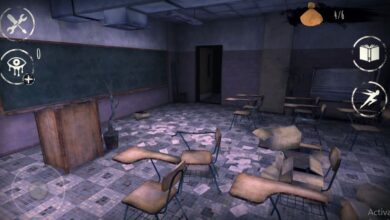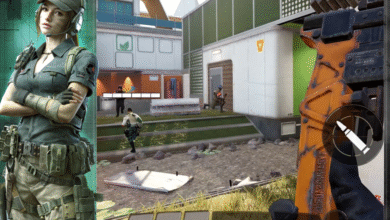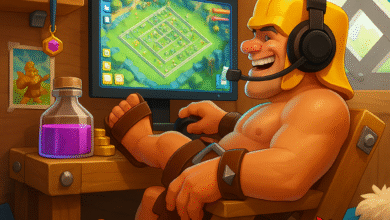Jenga Game: Rules, Strategy, History & Fun Variations (Full Guide)

The jenga game has become one of the most recognized family and party games in the world, famous for its suspense, simplicity, and ability to make any gathering more fun. Whether you’re playing at home, hosting a party, or competing in a bar night challenge, the jenga game brings people together through skill, tension, and laughter. In this guide, we’ll explore the full history of the game, how to play it correctly, smart strategies to win, and the best modern twists people use today. If you’ve ever wondered how the jenga game became such a global classic, you’re about to find out.
What Is Jenga?
Jenga is a physical skill game where players take turns removing wooden blocks from a tower and balancing them on top without causing it to collapse. The game looks deceptively simple, but every block you remove changes the tower’s stability, making the suspense grow as the structure becomes wobbly.
The name “Jenga” comes from the Swahili word kujenga, meaning “to build.” This reflects exactly what the game is about — construction, precision, and balance.
A Brief History of the Jenga Game
The jenga game was created by Leslie Scott in the early 1980s. Scott, born in Tanzania and raised across Africa, developed the concept from a wooden stacking game her family played using off-cut blocks from a sawmill. She later trademarked the name “Jenga” and launched it at the London Toy Fair in 1983.
It quickly caught the attention of toy retailers and families who appreciated games that didn’t require complicated rules or electronics. When Hasbro eventually took over distribution in the U.S., the jenga game reached mainstream popularity, becoming a staple in American households, bars, college dorms, and game cafés.
What Comes Inside a Standard Jenga Box?
A classic Jenga set typically includes:
- 54 precision-cut wooden blocks
- Instructions
- Stacking sleeve (in older editions)
- Official Jenga branding
Blocks are usually made from hardwoods like alder or beech, which provide durability and a satisfying tactile feel when sliding them out.
How to Play the Jenga Game (Step-by-Step Guide)
1. Build the Tower
Stack all 54 blocks into 18 layers of three blocks per layer, alternating direction. This makes a neat, sturdy tower.
2. Decide Who Goes First
The youngest player, oldest player, or whoever lost the last game typically starts. You can also flip a coin.
3. Remove One Block on Your Turn
Players may only use one hand at a time. You can tap blocks to test which ones are loose.
4. Place the Block on Top
Each block removed must be placed squarely on the topmost level, creating a new layer.
5. Keep Playing Until the Tower Falls
The person who causes the tower to collapse loses — and usually has to rebuild it for the next round.
Official Jenga Rules Everyone Should Know
Here are the core rules that make the jenga game fair and competitive:
- Only one hand may be used.
- You may touch multiple blocks, but once you move one, you must take it.
- Blocks must be placed straight, not sideways or angled.
- The tower must remain standing for the next player’s turn to count as a completed move.
- You can’t skip layers unless the row is fully complete.
These rules keep the game balanced and prevent players from using shortcuts or unfair stacking methods.
Why the Jenga Game Is So Popular
The lasting popularity of the jenga game comes from a mix of simplicity and suspense:
✔ Easy to Learn
Anyone can start playing in seconds.
✔ High Replay Value
No two Jenga towers fall the same way.
✔ Exciting and Competitive
The tension builds with every pull, making the game thrilling to watch and play.
✔ Great for All Ages
Kids, teens, adults, and grandparents can enjoy it together.
✔ A Perfect Party Game
It works indoors, outdoors, at bars, birthday parties, family nights, or office gatherings.
Popular Jenga Variations
Over the years, players and companies have created different editions of the jenga game:
1. Giant Jenga
Oversized wooden blocks that can stack up to 5 feet tall. Popular for backyard parties and events.
2. Jenga XXL or Super Jenga
Massive versions used in festivals and group tournaments.
3. Jenga Truth or Dare
Each block has a challenge written on it — great for parties.
4. Jenga Drinking Game
Each block includes drink instructions. For adults only.
5. Jenga Color Challenge
Colored blocks that require players to follow color rules.
6. Throw ‘n Go Jenga
Uses dice to decide which block type you must remove.
Expert Jenga Strategies: How to Win Consistently
Even though the jenga game looks like luck, there’s plenty of skill involved. Here’s what experienced players know:
1. Start With the Center Blocks
The middle blocks are usually safer to remove early.
2. Tap Gently to Find Loose Blocks
Never force a tight block — that’s the quickest way to lose.
3. Keep the Tower Balanced
Place blocks symmetrically on top so the weight doesn’t shift.
4. Don’t Rush Under Pressure
Slow, steady movements keep the structure stable.
5. Watch the Opponent’s Side
If you weaken a side, your opponent must deal with it next.
6. Remove Blocks From Higher Levels Later in the Game
This keeps the tower from becoming too top-heavy.
Fun Ways to Customize the Jenga Game
People love personalizing their Jenga sets. Some creative ideas include:
- Writing questions on each block
- Adding dares or challenges
- Painting the blocks
- Using Jenga as a team-building icebreaker
- Turning Jenga into a math or learning game for kids
Teachers often use Jenga blocks with vocabulary words, math facts, or trivia questions to create interactive learning sessions.
Jenga for Kids: Why It Helps Development
The jenga game isn’t just entertaining — it supports childhood development:
Hand-Eye Coordination
Kids learn how to control small movements.
Patience
Waiting for your turn teaches self-control.
Fine Motor Skills
Sliding blocks improves dexterity.
Basic Physics
Children begin to understand balance, weight, and gravity.
Critical Thinking
They must evaluate which block is safest to pull.
Is the Jenga Game Good for Adults Too?
Absolutely. Adults use the jenga game in:
- Office team-building
- Parties
- Brain-training sessions
- Stress relief
- Social gatherings
The game encourages focus and helps break social tension in group settings.
Where to Buy the Official Jenga Game
You can purchase the classic or giant versions online or at retailers like Walmart, Target, or Amazon. Always look for the official Hasbro version for the highest quality.
Here are two useful links:
Official Hasbro Jenga Product Page
Jenga Rules & Instructions
(These links are safe, publicly available, and commonly referenced.)
How Many Players Can Join the Jenga Game?
There’s no strict limit. The recommended number is 2–6 players, but you can rotate more people in larger groups, especially during parties.
How Long Does a Typical Jenga Game Last?
Most rounds take 5–15 minutes, depending on:
- player experience
- tower stability
- how daring players are
- the type of Jenga set
Giant Jenga rounds can take longer because blocks are heavier and harder to move.
Jenga in Pop Culture
The jenga game has appeared in:
- TV shows
- YouTube challenge videos
- Bar tournaments
- Corporate events
- School activity centers
It’s become a cultural symbol of tension and suspense. Even people who have never played it instantly recognize the tower.
Frequently Asked Questions (FAQ)
1. What age is the jenga game recommended for?
Ages 6 and up, though younger kids can play with supervision.
2. How many blocks are in the classic set?
A standard Jenga set has 54 blocks.
3. Can you use two hands in Jenga?
No. The official rules require using only one hand at a time.
4. How tall can a Jenga tower get?
Advanced players can reach 3–4 feet with the classic set and over 5 feet with giant sets.
5. Can the jenga game be played outdoors?
Yes — especially giant or waterproof editions.
6. What makes the tower fall most easily?
- Removing edge blocks
- Top-heavy stacking
- Rushing moves
- Uneven surfaces
The jenga game remains one of the most iconic tabletop games ever created. Its blend of simple rules, strategic gameplay, and entertaining suspense keeps it relevant across generations. Whether you’re planning a family game night, a backyard party, or a team-building session, Jenga is guaranteed to bring fun and excitement to the table.
If you’re looking to rediscover a classic, add new twists, or learn how to win more consistently, the jenga game is a perfect choice. Grab a set, gather a few friends, and see how high you can stack before gravity takes control.





